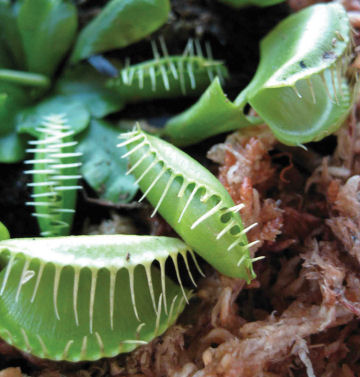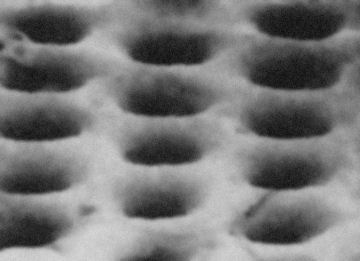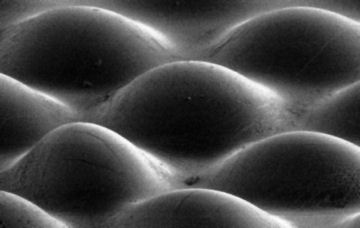Flytrap machine
Inspired by the Venus flytrap, scientists have invented a material that might improve human lives.
By Emily Sohn
The Venus flytrap is a plant, but it acts like a cross between an animal and a machine. When an unsuspecting fly lands on a flytrap’s leaf, the plant snaps shut, imprisoning the insect.
Inspired by the plant’s quick reflexes, researchers have designed a material that acts in a similar way. The material might someday have a number of uses, including delivering medications to just the right spot in the body.
There are no muscles in a flytrap’s leaf. Instead, the plant’s cells snap mechanically.
 |
|
The Venus flytrap is a plant with exceptionally quick reflexes. |
| Holmes and Crosby |
To mimic the snapping process, scientists from the University of Massachusetts, Amherst, attached two very thin layers of flexible material to each other. Each layer was just 1.5 millimeters (0.06 inch) thick.
Both layers contained circular indentations, like craters. When the layers were bonded, the borders of the indentations matched up, creating internal pockets.
Using chemical signals or physical pressure, the scientists were able to change the material’s shape in just tens of milliseconds. (There are 1,000 milliseconds in 1 second). Like the flytrap’s cells, the material’s pockets could flip inside out and back.
 |
|
A new material contains craters (above) that can flip into bumps (below), mimicking how the flytrap works. |
| Holmes and Crosby |
 |
|
|
| Holmes and Crosby |
Similar materials could do the same thing in response to heat, light, or electricity, the researchers say. But what’s important is that the snapping happens automatically. There’s no need to apply extra energy.
“There are very, very large changes in shape and geometry with a very, very small amount of pressure,” says researcher Alfred Crosby. “So it’s extremely sensitive.”
What’s the point? It turns out that flytraplike materials could be useful in our lives. For example, snapping surfaces in food packaging could work as sensors that react when food is spoiling or storage temperatures are too high.
Small devices made from these surfaces could transport medicines through the body. The material would snap open when the device arrived at the right place.
“Learning from nature can actually teach us how to come up with something more functional,” says Hongrui Jiang of the University of Wisconsin–Madison.
Going Deeper:
Webb, Sarah. 2007. Snappy transition: Venus flytrap inspires new materials. Science News 172(Nov. 24):324. Available at http://www.sciencenews.org/articles/20071124/fob3.asp .
Sohn, Emily. 2005. How a Venus flytrap snaps shut. Science News for Kids (Feb. 2). Available at http://www.sciencenewsforkids.org/articles/20050202/Note3.asp .







